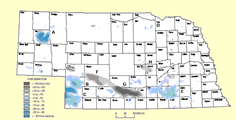Natural Resources, School of

Conservation and Survey Division: Faculty and Staff Publications
ORCID IDs
Lucas Vituri Santarosa http://orcid.org/0000-0001-7180-7715
Didier Gastmans http://orcid.org/0000-0002-1340-3373
Troy E. Gilmore http://orcid.org/0000-0001-9939-4780
Jan Boll http://orcid.org/0000-0001-7202-5299
Vitor Fidelis Monteiro Gonçalves http://orcid.org/0000-0003-1686-1836
Document Type
Article
Date of this Version
1-20-2022
Citation
Published in International Journal of River Basin Management 2022
doi:10.1080/15715124.2021.2002346
Abstract
Changes in climate and water demand in densely populated regions increasingly affect hydrological systems, and, in turn, impact socioeconomic conditions. In this case study, we identify how the hydrogeological frameworks of two water resource management units, Tietê-Jacaré (TJ) and Piracicaba-Capivari-Jundiaí (PCJ) in Sao Paulo state (Brazil), control the baseflow processes and resilience in the face of streamflow fluctuations in response to anthropogenic activities and climate variation. The results reveal between 40% and 75% contributions of baseflow to total streamflow in basins overlying crystalline and sedimentary aquifers. The basins in PCJ which mostly overly crystalline aquifers, have shorter water residence times and greater dependence on surface water. Therefore, streamflow in the PCJ basins is vulnerable during the drought period and the management model affected the water resilience of the basins (transfer of water to Cantareira System). The TJ basins have greater streamflow contributions from aquifer discharge linked to the presence of important sedimentary aquifers, which improves resilience under changing rainfall patterns, these basins present a more stable situation of resilience. Ultimately, the two management units require different planning strategies with adaptive and dynamic actions to mitigate the social, economic, and environmental effects caused by the variability and reduction of water sources.
Included in
Geology Commons, Geomorphology Commons, Hydrology Commons, Paleontology Commons, Sedimentology Commons, Soil Science Commons, Stratigraphy Commons


Comments
Copyright © 2022 International Association for Hydro-Environment Engineering and Research; published by Taylor & Francis. Used by permission.